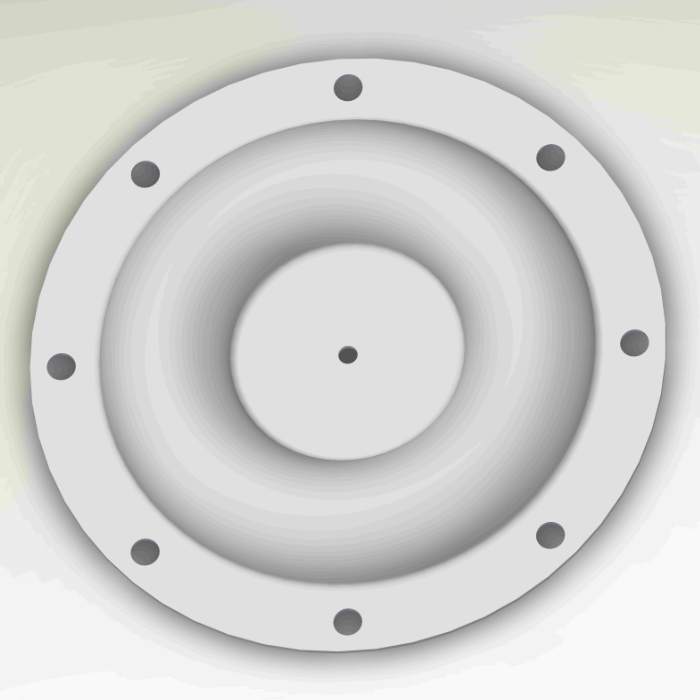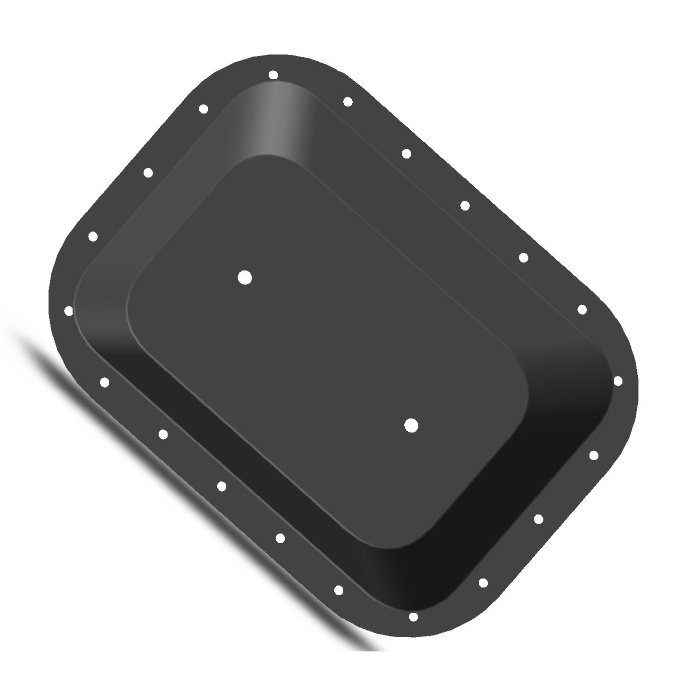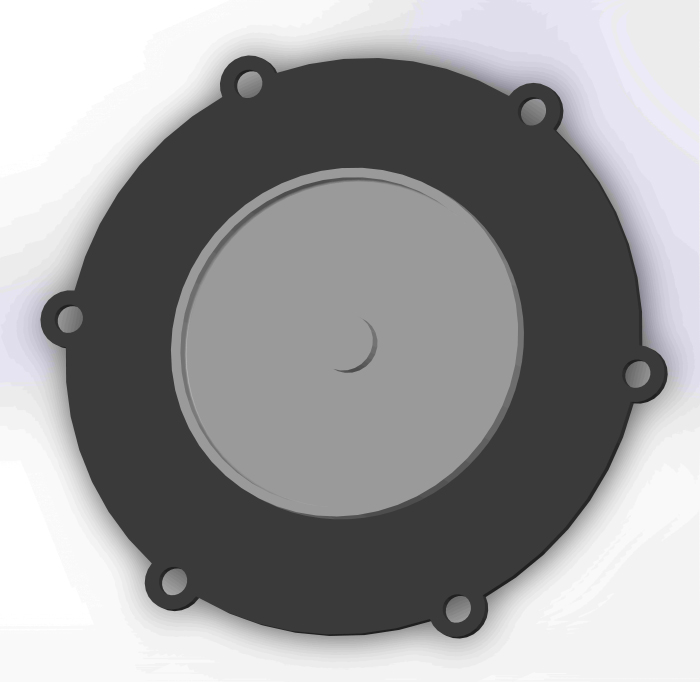GENERAL SEALTECH LIMITED is a professional company that produces various diaphragm products. We started producing diaphragms in 1990 and entered the international market in 2007. Our products mainly include Turbo Actuator Waste-gate Diaphragms,Diaphragm Valve pump Diaphragms,LPG CNG Diaphragm,Rolling diaphragm,Solenoid Pulse Valve Diaphragms,Teflon / PTFE Diaphragm, etc.
The dimensional tolerance of diaphragm forming can reach+/-0.01. The product has characteristics such as Wear resistance,Chemical resistance,Resistance to special media, etc. At present, our products have been exported to America,Asia,Europe and other regions, as well as the United States, France, South Korea, Andorra,Azerbaijan,Australia and other countries.
| Product Name | vacuum regulator diaphragm |
| Materials | NBR,FVMQ,NR,ACM,EPDM,etc |
| Brand Name | GENERAL SEALTECH |
| Place of Origin | Hangzhou,China |
| Product Type | Diaphragm |
| Colors | yellow,Recommended black |
| Sample | Available |
| Hardness | 20~90 Shore A diaphragm for regulator |
| Packing | PE Bag+Carton |
| OEM/ODM | Acceptatble |
| Export region | Europe,America,Asia… |
| Export Country | USA,France,Italy,Australia,Uganda,Uzbekistan,Italy…etc |
| Properties | Environment Protective,Abrasion Resistance,Steam Resistance…etc |
| Size | DN max = 2000mm, all other smaller sizes will per customer demands |
| Warranty | 1 Year |
| Function | Seal for Machine,Electrical Appliances,etc |
| After-sale Service | Online technical support |
| Certification | CCS,KTW,PAHS,WRAS,EN681-1,etc |
| Packaging | carton or according to requirements of the customers |
| Lead time (days) | 7-15 (To be negotiated) |
| Supply Ability | 50000-200000 Piece/Pieces per Month |
Please note: The above table data is for reference only. For specific information, please contact us.
The design principle of a vacuum regulator diaphragm is to use the failure strength and failure mode of materials or structures to set personalized control strategies for a certain heat or mass transfer medium, or for the occurrence of certain flow or diffusion effects, in order to achieve specific functions or protocols.
If the medium used is corrosive, corrosion-resistant diaphragm materials should be selected;
Necessary protective measures should be taken to minimize damage to objects that come into contact with the already installed diaphragm.
All are made of materials that comply with national safety standards, ensuring the safe use of industrial diaphragms.
vacuum regulator diaphragm—FAQs Guide
2.As a vacuum regulator diaphragm manufacturer,What delivery terms do you accept?
3.Can vacuum regulator diaphragm be used in applications requiring compliance with industry standards, such as FDA, ASME, or ISO?
4.How do vacuum regulator diaphragm provide sealing solutions in hydraulic accumulators and fluid reservoirs?
5.Do vacuum regulator diaphragm require maintenance or replacement over time, and what are the signs that indicate the need for replacement?
6.Are there vacuum regulator diaphragm designed for pulsation dampening or shock absorption in hydraulic systems?
7.What types of sealing mechanisms are commonly used with vacuum regulator diaphragm, such as clamped, bolted, or adhesive seals?
8.As a vacuum regulator diaphragm manufacturer,What kind of payment do you accept?
9.As a vacuum regulator diaphragm manufacturer,how can we guarantee quality?
10.How are vacuum regulator diaphragm designed to resist abrasion and wear in applications with abrasive media?
11.As a vacuum regulator diaphragm manufacturer,what services can we provide?
12.How do vacuum regulator diaphragm respond to cyclic or pulsating pressure loads, and what is their fatigue life in such conditions?
13.How are vacuum regulator diaphragm designed to resist chemical corrosion and degradation in aggressive environments?
14.Are there vacuum regulator diaphragm equipped with built-in sensors for real-time monitoring and feedback in automated systems?
15.As a vacuum regulator diaphragm manufacturer,Can you make custom parts based on my sample?
16.How do vacuum regulator diaphragm perform in applications where flexibility and rapid response to pressure changes are crucial?
1.Are vacuum regulator diaphragm suitable for use in applications involving harsh radiation or extreme pressure differentials?
No, diaphragms are not suitable for use in applications involving harsh radiation or extreme pressure differentials. Diaphragms are designed to be used in applications with relatively low pressure differentials and are not designed to withstand extreme temperatures or radiation.
2.As a vacuum regulator diaphragm manufacturer,What delivery terms do you accept?
We accept EXW,FOB, CIF. If you want to use other delivery terms,please contact us.
3.Can vacuum regulator diaphragm be used in applications requiring compliance with industry standards, such as FDA, ASME, or ISO?
Yes, diaphragms can be used in applications requiring compliance with industry standards, such as FDA, ASME, or ISO. However, the specific requirements of the application must be taken into consideration when selecting the appropriate diaphragm material and design.
4.How do vacuum regulator diaphragm provide sealing solutions in hydraulic accumulators and fluid reservoirs?
Diaphragms provide sealing solutions in hydraulic accumulators and fluid reservoirs by creating a barrier between the fluid and the atmosphere. This barrier prevents the fluid from leaking out and keeps the pressure inside the accumulator or reservoir at a constant level. The diaphragm also helps to reduce the amount of air that can enter the system, which helps to reduce the risk of cavitation.
5.Do vacuum regulator diaphragm require maintenance or replacement over time, and what are the signs that indicate the need for replacement?
Yes, diaphragms require maintenance and replacement over time. Signs that indicate the need for replacement include a decrease in sound quality, a decrease in volume, and a decrease in the overall performance of the diaphragm. Additionally, if the diaphragm is damaged or cracked, it should be replaced immediately.

6.Are there vacuum regulator diaphragm designed for pulsation dampening or shock absorption in hydraulic systems?
Yes, there are diaphragms designed for pulsation dampening and shock absorption in hydraulic systems. These diaphragms are typically made of rubber or elastomeric materials and are designed to absorb the shock and vibration of the hydraulic system. They are often used in applications such as hydraulic cylinders, pumps, and valves.
7.What types of sealing mechanisms are commonly used with vacuum regulator diaphragm, such as clamped, bolted, or adhesive seals?
In general, vacuum regulator diaphragm will use these sealing mechanisms:
1. Clamped Seals: Clamped seals are the most common type of diaphragm seal. They are typically used in applications where the pressure is relatively low and the temperature is not too extreme. Clamped seals are easy to install and provide a reliable seal.
2. Bolted Seals: Bolted seals are used in applications where the pressure is higher and the temperature is more extreme. They are more difficult to install than clamped seals, but provide a more reliable seal.
3. Adhesive Seals: Adhesive seals are used in applications where the pressure is low and the temperature is not too extreme. They are easy to install and provide a reliable seal. However, they are not as reliable as clamped or bolted seals.
8.As a vacuum regulator diaphragm manufacturer,What kind of payment do you accept?
Trade assurance, T/T, L/C, Weston Union are all accepted.
9.As a vacuum regulator diaphragm manufacturer,how can we guarantee quality?
Always a pre-production sample before mass production;Always final Inspection before shipment.
10.How are vacuum regulator diaphragm designed to resist abrasion and wear in applications with abrasive media?
Diaphragms are designed to resist abrasion and wear in applications with abrasive media by using materials that are highly resistant to abrasion and wear. These materials include polyurethane, rubber, and other elastomers. The diaphragm is also designed with a thicker wall and reinforced edges to provide additional protection against abrasion and wear. Additionally, the diaphragm may be coated with a protective material such as a fluoropolymer to further reduce wear and tear.

11.As a vacuum regulator diaphragm manufacturer,what services can we provide?
Free design and samples offered.Custom package and stickers.
12.How do vacuum regulator diaphragm respond to cyclic or pulsating pressure loads, and what is their fatigue life in such conditions?
Diaphragms respond to cyclic or pulsating pressure loads by flexing and deflecting in response to the pressure. The fatigue life of a diaphragm in such conditions depends on the material used, the frequency of the pressure load, and the magnitude of the pressure load. Generally, fatigue life is shorter for higher frequency and higher magnitude pressure loads.
13.How are vacuum regulator diaphragm designed to resist chemical corrosion and degradation in aggressive environments?
Diaphragms are designed to resist chemical corrosion and degradation in aggressive environments by using materials that are resistant to the specific chemicals present. Common materials used for diaphragms include fluoropolymers, such as PTFE, FEP, and PFA, as well as elastomers, such as EPDM, Viton, and Neoprene. These materials are chosen for their chemical resistance, as well as their ability to withstand extreme temperatures and pressures. Additionally, diaphragms may be coated with a protective layer of a corrosion-resistant material, such as a fluoropolymer or a metal, to further protect them from chemical attack.
14.Are there vacuum regulator diaphragm equipped with built-in sensors for real-time monitoring and feedback in automated systems?
Yes, there are diaphragms equipped with built-in sensors for real-time monitoring and feedback in automated systems. These diaphragms are typically used in industrial applications such as pumps, valves, and compressors. The sensors measure the pressure and flow of the system and provide feedback to the control system to ensure the system is operating correctly.
15.As a vacuum regulator diaphragm manufacturer,Can you make custom parts based on my sample?
Yes, you can send the sample to us by express and we will evaluate the sample, scan the features and draft 3D drawing for production.

16.How do vacuum regulator diaphragm perform in applications where flexibility and rapid response to pressure changes are crucial?
Diaphragms are ideal for applications where flexibility and rapid response to pressure changes are crucial. They are designed to flex and move in response to pressure changes, allowing them to quickly adjust to changing conditions. This makes them ideal for use in applications such as pumps, valves, and other pressure-sensitive systems. Additionally, diaphragms are often used in applications where a tight seal is required, such as in fuel tanks and hydraulic systems.
Tags: winsmith pump diaphragm,hypro pto pump diaphragm,bmw 760li high pressure fuel pump diaphragm,fish pump diaphragm

